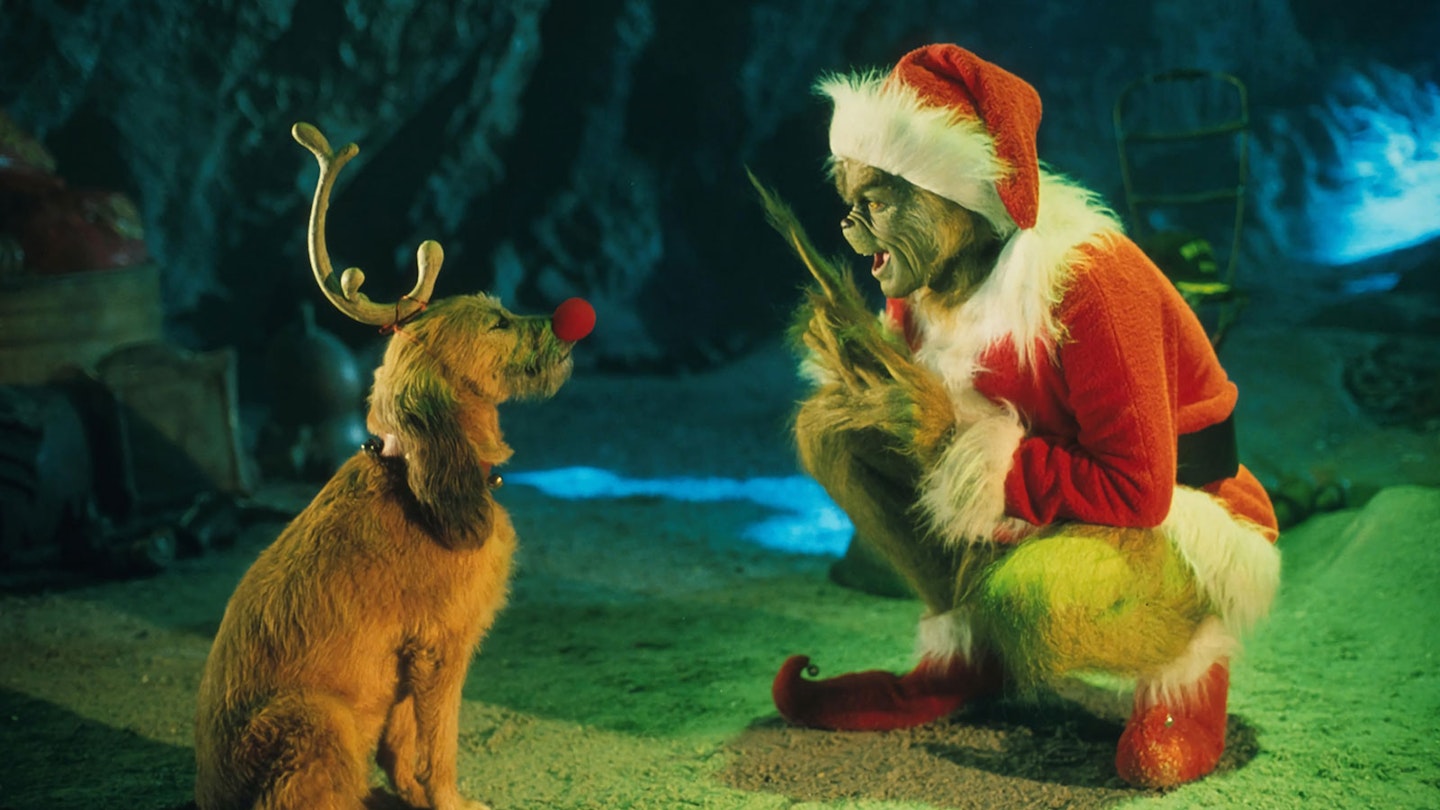This piece was originally published in the January 2001 issue of Empire.
It's not easy being green. Just ask Kermit The Frog. Or better still, ask Jim Carrey. For the troubles of a Muppet are nothing when compared to those of a $20 million film star who's had to endure a 24-month shooting schedule with four-hour-a-time make-up sessions to bring to life one of the most famous creations of author Dr. Seuss. If you haven't heard of The Grinch before, all that's about to change, thanks to director Ron Howard and, of course Carrey – unrecognisable beneath a mountain of fur and facepaint, but brilliant all the same.
First published in 1957, How The Grinch Stole Ch__r__istmas focuses on a green grumpy-guts for whom peace on earth and goodwill to all men is just something which happens to other people. He takes his hatred of the festive season just a little too far, however, when he sets out to ruin the holidays for the Christmas-loving inhabitants of Whoville.
Howard's film, naturally, goes into greater detail, with The Grinch portrayed as a verdant ball of self-loathing and the real reasons for his stance on Christmas made all too clear. There's a cute child, Cindy-Lou Who (Taylor Momsen), an intelligent dog called Max, some dreadful songs and some of the most dazzling make-up and visuals you'll have seen on screen all year. And in the true tradition of such films as Gremlins (1984) and The Nightmare Before Christmas (1993), Howard reminds us that the festive season is never better portrayed than when it's being thoroughly spoilt.
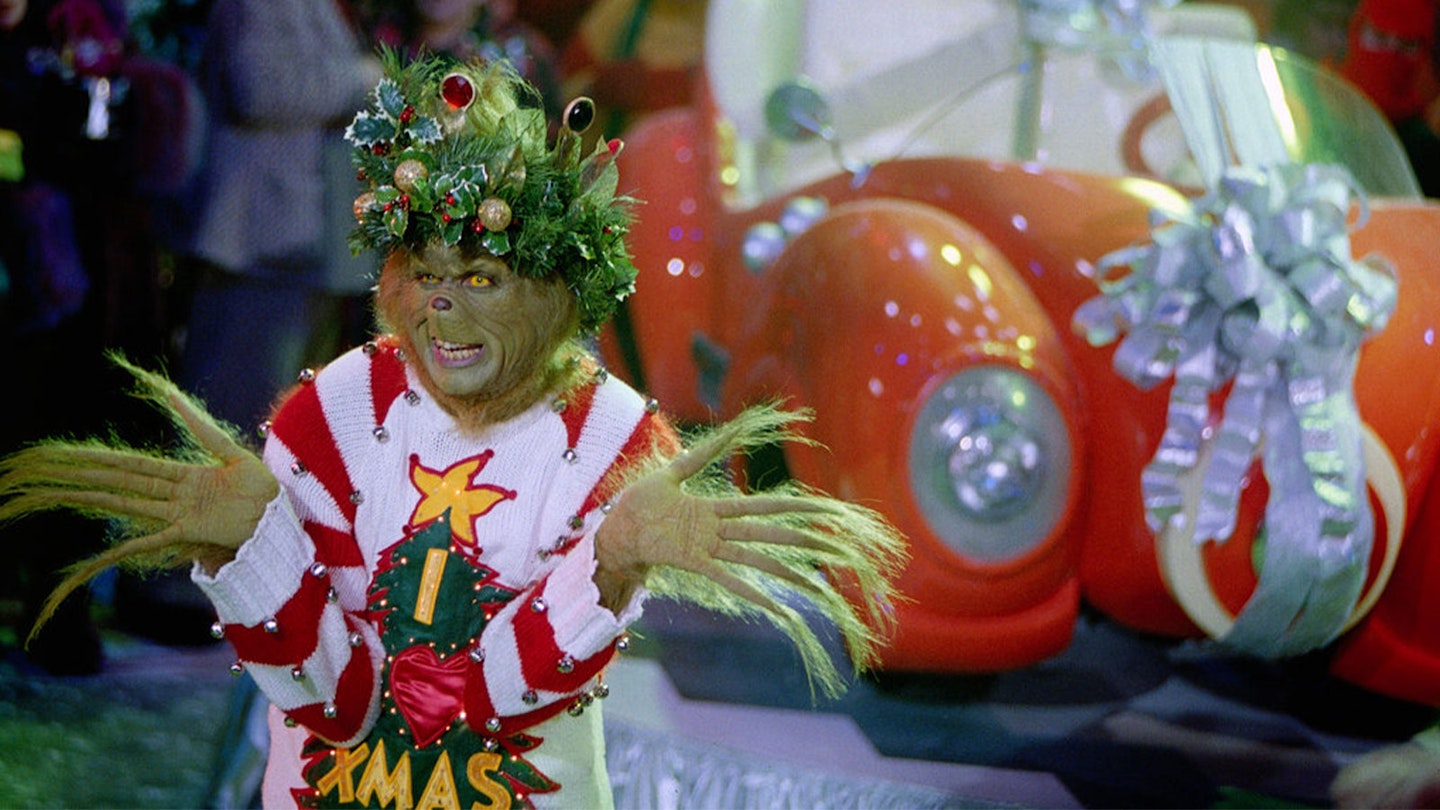
Today, free of make-up and fur, Jim Carrey looks far more familiar ("Somewhat human," he says with a grin). And given that this was a pet project for him, he's naturally enthusiastic about promoting it. "I've always been fascinated by this story," he says. "It's one of those things that you just can't say no to. And for me, The Grinch is about change of heart, and that's what's important to me about this tale – that even the most surly human being can be broken by Christmas."
Given the nature of Seuss' work, it comes as no surprise that this is the first time one of his cautionary tales has seen the big screen. All manner of obstacles, from the tone of his poems to the approval of Seuss' widow, Audrey Geisel, needed to be faced before the film could become a reality. Ultimately, though, it was the subversion and cynicism of Seuss' tales which had previously proven off-putting to studios, Disney in particular balking at the thought of bringing his particular brand of unsentimental social comedy to life. One attempt to film an original Seuss story (The 5,000 Fingers Of Dr. T) in the 1950s proved just too surreal and weird for cinemagoers (something not helped by the involvement of Salvador Dali), but fast forward several decades, and family audiences raised on a diet of The Simpsons and Toy Story are far more used to the less-than-sweet underside of sugar-coated entertainment.
"It was all just: a challenge, and at a certain point it got past that, and hopefully from everything that everyone is telling me, it got to the point where you saw the Grinch's soul."
JIM CARREY
And it's easy to see why The Grinch has been chosen above all others: for one thing, it's the only Seuss fable to have been filmed in moderately successful fashion. A 1960s cartoon of the story became a staple of US telly schedules, and what's more, it had a profound effect on the young Ron Howard - "Seeing it," he smiles, "was part of the holiday experience".
And then there was the small matter of Jim Carrey.
"Jim Carrey wanted to play the Grinch," explains Ron Howard, "and he would get the rights for the whole story and give it to another producer, if that's what it took." Except, of course, he had to impress Audrey Geisel, something further complicated by the fact that he was filming Man On The Moon at the time of casting, and was continually "in character" as Andy Kaufman – including at their first meeting.
"He invited Mrs. Geisel to the set," Howard recalls, "and for a while he was talking to her like Andy Kaufman. And then he'd drop that and turn back to her and be the Grinch for a whole minute of Grinchiness, including the big grin, and she was totally enthralled. By the time I came to her with my idea, she said to me, 'I love it, and I want Jim Carrey to play the Grinch.' Which is what I wanted to hear because I probably wouldn't have done the movie with anyone else."
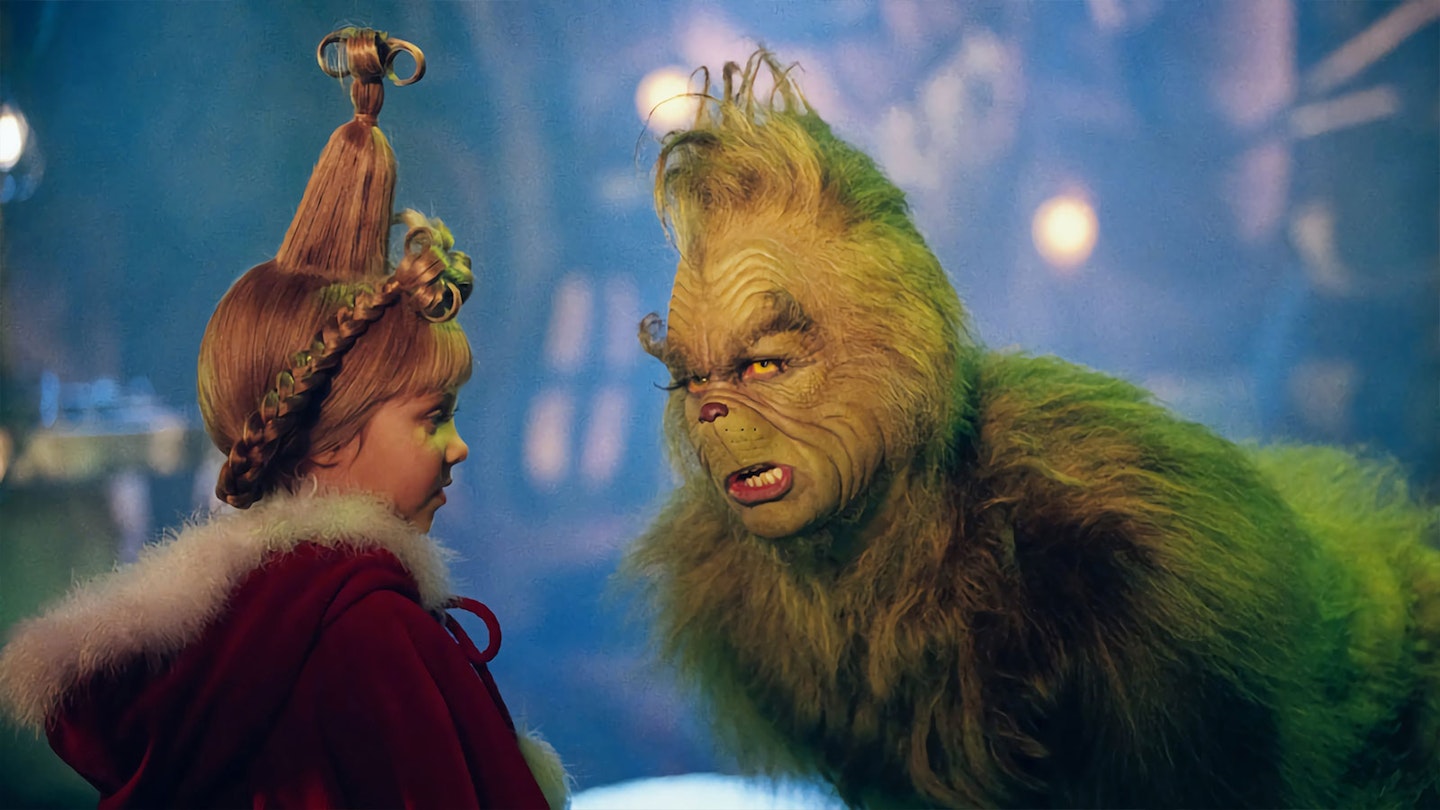
Working on the production itself was, according to the director, "very unorthodox", given that it required the set designers and costumiers to work backwards, creating Seuss' world while the scriptwriters were still knocking the story into shape. Make-up genius Rick Baker, whom Howard credits as an invaluable part of the project, was also brought on board at an early stage to work his own brand of cosmetic magic on Carrey's flexible features, as well as those of the Whos. But getting to the studio for 6:30am every morning, spending four hours in the make-up chair and then donning the 10lb bodysuit before a single frame of film was even shot, soon began to take its toll on the star.
"It was all just: a challenge," insists Carrey, "and at a certain point it got past that, and hopefully from everything that everyone is telling me, it got to the point where you saw the Grinch's soul. That's what you're after, and it's really just what you project." The hardest part, according to Howard, was the yellow contact lenses Carrey had to endure on a daily basis. "Some people can wear contacts and some can't," Howard points out, "and Jim can't, but he had to, because he knew it was right for the character. But there were days when we had an optometrist standing by all the time with a super magnifying glass because he always got stuff in his eyes, and then we were told he couldn't film."

Eventually, things became so unbearable for Carrey that Howard was genuinely worried that "he wouldn't be able to make it through the movie”. Enter producer Brian Grazer, who sent Carrey off to train with a Navy SEAL, an expert in teaching paramilitaries how to cope with intense discomfort. After a weekend of mastering the techniques and learning how to handle pain principles, Carrey came back a changed man. "It was tough, the first couple of weeks," Carrey admits, "but then I was able to transcend it because I learned about pain deferment and things like that. You can pinch your arm or something like that to take the focus off your discomfort. It's amazing what humans can get used to."
"Without a doubt, in every single case, within 30 seconds of when Jim started moving they'd be able to tell it was him."
RON HOWARD
Howard also managed to boost on-set morale with a little stunt of his own. "My brother Clint is in the movie (as, indeed, he is in all of Howard's flicks), and he said to me, 'You know, everybody's getting a little down. If there's maybe some kind of stunt you could pull, wear the make-up, let people know that you know it's tough...' So one morning without telling anyone, I slipped into the make-up chair at about 3:30am in the morning and donned the costume, and shocked Jim, and got a real cheap laugh out of the crew, and I think people appreciated that I was willing to endure at least one day. It was a bizarre day in Whoville to have two Grinches wandering around."
Except Howard's Grinch-ian guise didn't include the yellow contacts. "No, because you have to have those specially fitted for your eye, so that would have been too much of an expense just for a joke, and frankly, I didn't want to wear the damn things." Carrey, although appreciative of the gesture, thought Howard should have endured the full horror. "But I wanted the eyes in," he whines. "I wanted to torture him more. I wanted him to dance around for a while," he grins. "But it was great."
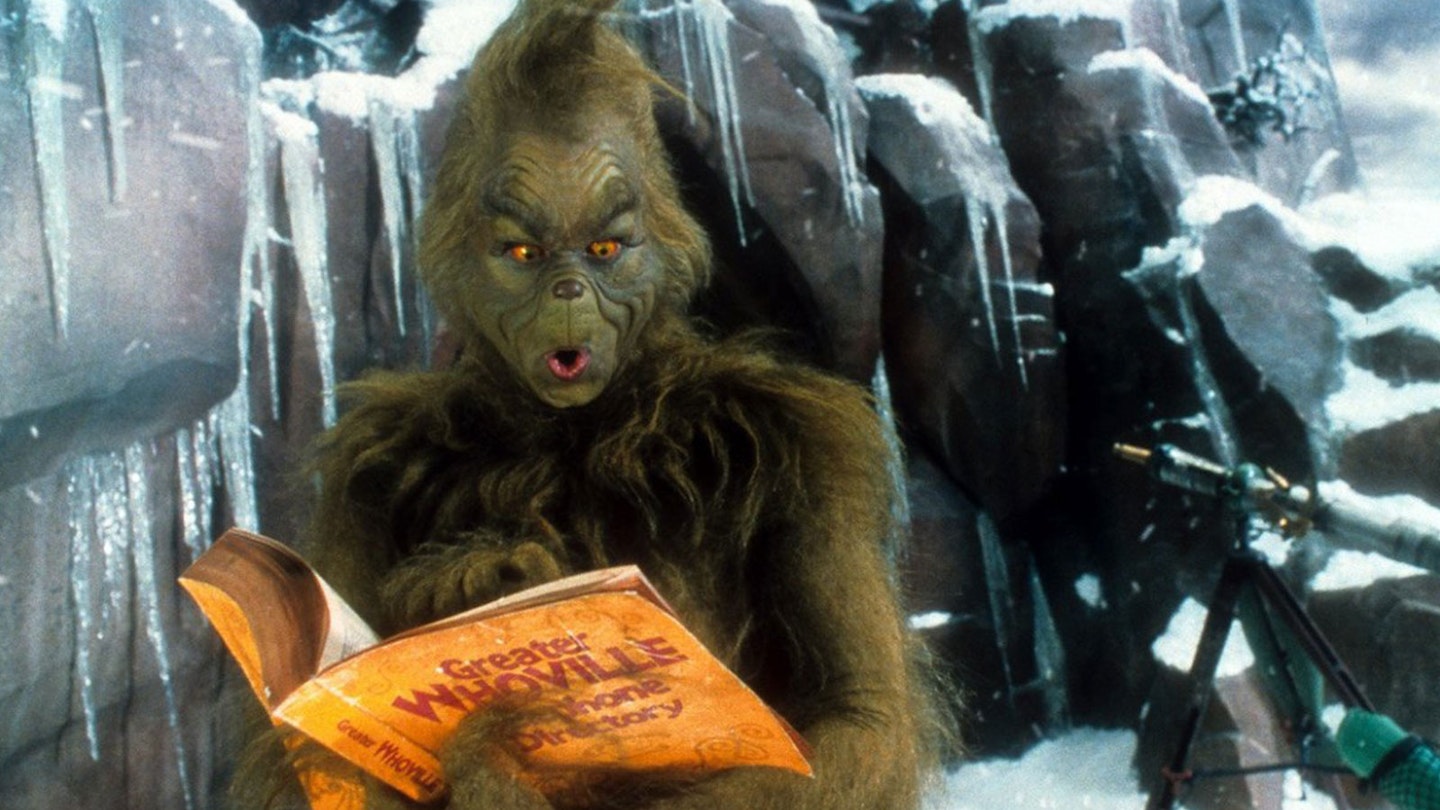
In one respect, Baker's terrific make-up job had an even bigger drawback: who wants to see a film in which the most famous person is unrecognisable? Luckily the studio's initial scepticism cooled when the director cut together footage of himself, Rick Baker and a number of other people doing their own interpretations of the Grinch, along with excerpts of Carrey. "I kept the tape around," Howard says, "and whenever my kids' friends came by, or neighbours, I would say to them, 'Take a look at this. These are Grinches, some of them are Jim Carrey, some of them are other people. Can you tell me which is which?' And without a doubt, in every single case, within 30 seconds when Jim started moving they'd be able to tell the difference."
"It was a concern for some people," adds Carrey, "but they'll totally recognise me in this. It's just a little bit of Latex, and you can wear anything under that stuff. It's beautiful, very forgiving."
"I think it was a reasonable question to raise," adds Howard, referring to the doubters, "but if it works, it's going to be because a great character is created. Besides, we did make-up where you could see it was Jim, and it looked like a bad Hallowe'en costume."
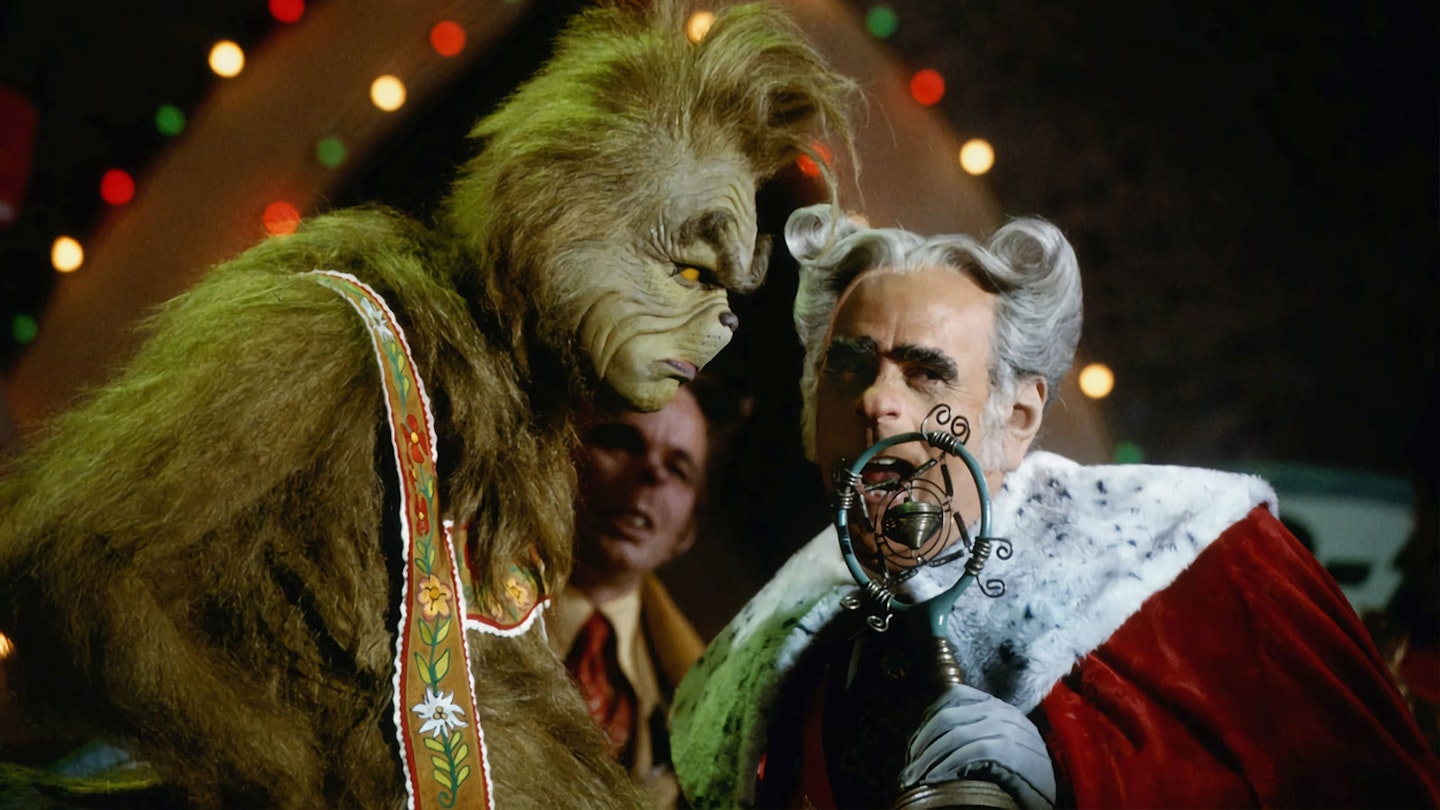
Forget about Hallowe'en and roll on December 25. Everything's going Grinch for Christmas, from the obvious dolls through to every American's favourite – Oreo cookies, with green, instead of the more traditional white, filling. Which, given the film is based entirely around a character who frowns upon the commercialisation of the holiday, seems just a tad ironic. "The irony has not been lost for any of us for any of the 24 months we've been working on it," assures Howard. "But you know, when I was a kid, there was nothing like watching Zorro on television with my Zorro hat on and my cape and my mask. I think it expands the experience for kids, the products that I have seem fun and delightful and bright and cheery."
But he does think that when it comes to Christmas, the Grinch has perhaps got it slightly right. "One of the guiding principles for me was to try to create for adults some images that they'd relate to, and the kind of moments when I'll turn to my wife and say, 'Didn't we put the lights up a couple of days earlier than last year, and how many gifts are on the list this year...', and suddenly Christmas becomes this dreaded chore instead of the delightful event it's supposed to be. For me, Christmas is a time to drop what you're doing for a week and really focus on giving. And, as a kid, dream about receiving."
